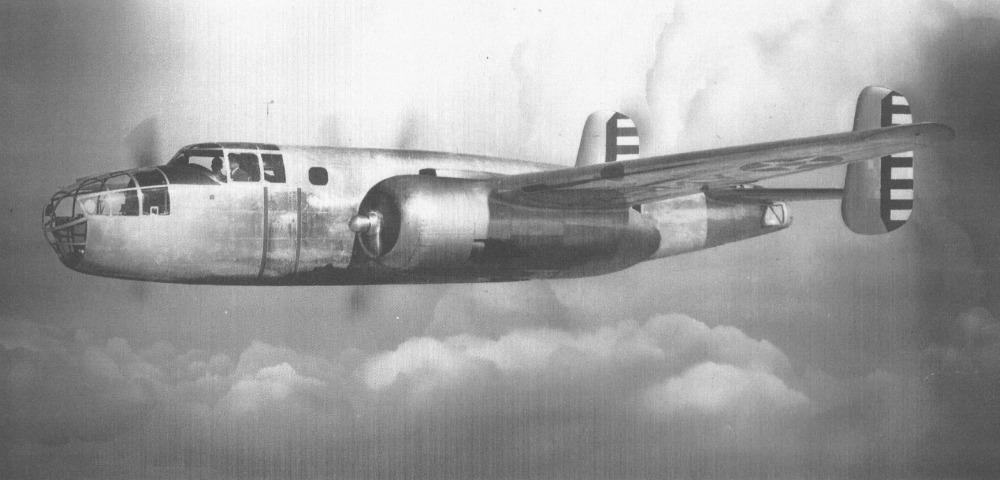History
B-25 development began on March 11, 1939, when the US Army Air Corps announced Proposal No. 39-640, seeking a new medium bomber with a 3,000 lb (1,400 kg) bombload, capable of flying over 2,000 miles (3,200 km) at a top speed of more than 300 mph (480 km/h). Martin, Douglas, Stearman, and North American all submitted designs. North American’s proposal evolved from its unsuccessful NA-40B light bomber prototype, which was extensively redesigned into the NA-62. This new design retained the NA-40B’s tricycle landing gear and twin tail, but was larger, faster, and able to carry a greater payload. Instead of using the raised tandem cockpit of the NA-40B, a side-by-side cockpit flush with the top of the fuselage was used. The wing was lowered from a shoulder-mounted position to a mid-fuselage mount, and dihedral was added.
The NA-62’s crew consisted of five: pilot, copilot, bombardier, navigator/radio operator, and tail gunner. Defensive armament consisted of a flexible .30-caliber machine gun in the nose, mountable in any of three ball-socket positions (front, left, and right). Three additional .30-caliber waist guns were manned by the radio operator, one in a window on each side, and a third mounted in the large overhead window atop the fuselage. The final defensive weapon was a single .50-caliber machine gun in the tail, with the gunner operating it from a prone position.
The NA-62 was submitted before the September 10, 1939, deadline; Accepting by August 12, 1939, the Army ordered 184 aircraft under the designation B-25. The contract was officially finalized on September 10, alongside Martin’s Model 179 (B-26). Because the design was ordered straight from the drawing board, there was no formal XB-25 prototype; early production aircraft were used for testing while subsequent examples rolled off the line.
The first B-25 (S/N 40-2165) was completed by early summer 1940 and made its maiden flight on August 19, 1940. Next two B-25s were built and sent to Wright Field for evaluation, with the first one staying behind with North American. The first nine production aircraft had a continuous wing dihedral, but flight tests revealed this caused partial directional instability. The 10th aircraft introduced the now-iconic “gull wing” with a flat center section and dihedral on the outer panels, greatly improving stability. All subsequent aircraft used this configuration. By the end of 1940, 24 B-25s had been delivered before production transitioned to the next variant.
The first unit to operate the B-25 was the 17th Bombardment Group (Medium), which began receiving 19 aircraft in February 1941. Based at McChord Field, Washington, the group flew coastal patrols following the attack on Pearl Harbor. These duties continued after their move to Pendleton, Oregon, then to Lexington County Airport, South Carolina, for Atlantic patrols, and later to Barksdale Field, Louisiana, for Gulf of Mexico patrols. The 17th became the first US unit to provide coastal defense coverage across the entire American coastline. Notably, one of its B-25s was the first American bomber credited with sinking a German U-boat in US territorial waters on December 24, 1941, and the unit later claimed the sinking of a Japanese submarine in the Pacific.
Upon introduction to the service, the B-25 was eventually given an official name in honor of Brigadier General William “Billy” Mitchell, a pioneer of US military aviation.







